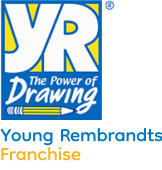Flexible Lifestyles and Valuable Services

Bette Fetter started teaching children’s art classes around her kitchen table as a favor to a friend, but it didn’t take long for her to realize that there were lots of kids out there who were hungry for true art education beyond what they received in school. After developing a curriculum and solidifying her teaching method, Fetter started Young Rembrandts in 1988 to teach art to kids throughout the Chicago area. Thirteen years later, she started to franchise the business. What started out as a group of kids learning art around Fetter’s kitchen table has grown into a successful franchise concept that Fetter says is more important than ever today.
As school districts across the country scale back their art education programs and ramp up their focus on standardized testing, Fetter argues, the chance for children to receive a well-rounded education that teaches them creativity and self-expression becomes smaller. With schools less able to provide the amount of art education children need as part of the core curriculum, they are even more interested in having Young Rembrandts programs after school at their schools. “We want children to have art as an integral part of the school’s core curriculum, and even more art available after school for those students who want more art.”
With franchisees operating in 29 states in the United States and four provinces in Canada, and internationally, Young Rembrandts is spreading its commitment to art education to more and more students every year. Fetter says the passion of the company’s franchisees is what makes Young Rembrandts successful, and she believes the concept will be critical in developing a new generation of artists and well-rounded individuals.
Read the entire article here to learn more about what makes Young Rembrandts Franchise unique and successful...
- Unique Product
- Successful Model
- Complete Education
About Young Rembrandts:
For 29 years, Young Rembrandts has taught the power of drawing to children. The proprietary method and step-by-step curriculum dispels the myth that art is a talent a child has or doesn’t have, and demonstrates that art can be learned by all children. Children taught using this method develop increased patience, discipline and focus as well as a host of artistic skills such as art history, drawing and art skills, and expanded creativity, imagination and confidence.





